Dive deep into the world of birdwatching with our comprehensive photo guide dedicated to the blue birds in Wyoming. From the vibrant Mountain Bluebird to the quavering call of the Pinyon Jay, Wyoming’s skies are adorned with a diverse range of blue birds, each flaunting its unique characteristics and habitats.
Whether you are an avid birdwatcher or a novice enthusiast, this guide to wildlife photography is tailored to equip you with all the essential knowledge to identify and cherish the many bluebirds that grace the vast landscapes of Wyoming.
While the eastern half of the state has its own unique species, western Texas and Wyoming share several species, making it easier for enthusiasts familiar with one region to identify birds in the other.
Blue Birds Found In Wyoming
Despite its arid and rugged terrain, Wyoming hosts a wide range of habitats, from alpine meadows to expansive grasslands and dense forests, providing a home for a diverse range of bird species. This variety of habitats, combined with its position along several migratory routes, makes Wyoming a hot spot for birdwatching, attracting a plethora of blue bird species, among others, each with their own unique behaviors and habitats. Whether you’re a seasoned birdwatcher or a novice eager to learn, Wyoming’s diverse geography offers a rewarding experience for everyone.
Pinyon Jay


| Feature | Measurement |
|---|---|
| Scientific Name | Gymnorhinus cyanocephalus |
| Length | 9-11 in |
| Wingspan | 18 in |
| Weight | 90-120 g |
The Pinyon Jay is a small, stout bird found in the western United States and Mexico. It has a distinctive blue-gray coloration with a black head and neck. The bird is well adapted to living in dry, arid habitats with sparse vegetation and can often be found in pinyon pine and juniper forests. The Pinyon Jay is known for its communal behavior, living in groups of up to several hundred birds during the non-breeding season. During breeding season, they form monogamous pairs and build nests in juniper trees.
The Pinyon Jay’s diet consists mainly of pinyon pine seeds, but they also eat insects, berries, and other seeds. They have a unique way of storing food for later, using their expandable throat pouch to carry up to 50 seeds at once. The Pinyon Jay is an important seed disperser for pinyon pine and juniper trees, and is a vital part of the ecosystem in its range. However, habitat loss and fragmentation due to human activities, such as logging and oil and gas development, have led to declines in Pinyon Jay populations in recent years.
Eastern Bluebird
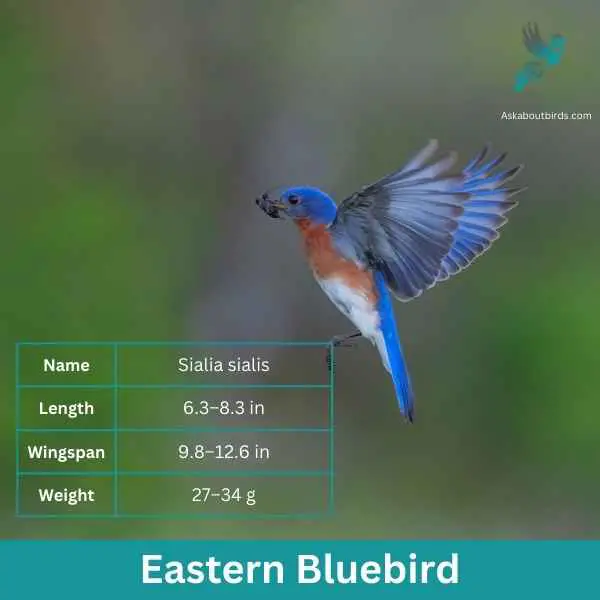
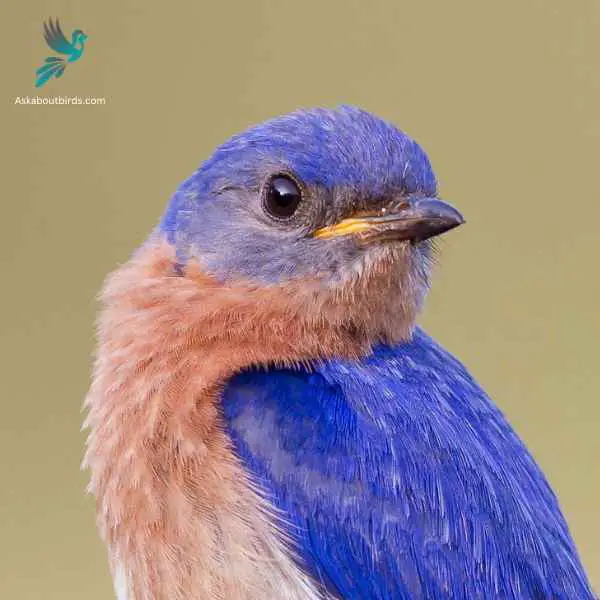
| Feature | Measurement |
|---|---|
| Scientific Name | Sialia sialis |
| Length | 6.3–8.3 in |
| Wingspan | 9.8–12.6 in |
| Weight | 27–34 g |
The Eastern Bluebird (Sialia sialis) is a small thrush found in open woodlands, farmlands, and orchards, and is recognized for its vibrant blue and red coloration. Male Eastern Bluebirds are dazzling with bright blue upperparts and a rusty or brick-red throat and breast, while females, though less colorful, still offer a similar pattern. The bird is native to North America and is commonly seen east of the Rockies, from Canada to the Gulf States and southeastern Arizona to Nicaragua.
Eastern Bluebirds feed on insects, wild fruit and berries. They have a gentle nature and are often seen perched alone or in small groups in the open, scanning the ground for prey. They are cavity nesters and will use old woodpecker holes or birdhouses if they are the right size.
Western Bluebird
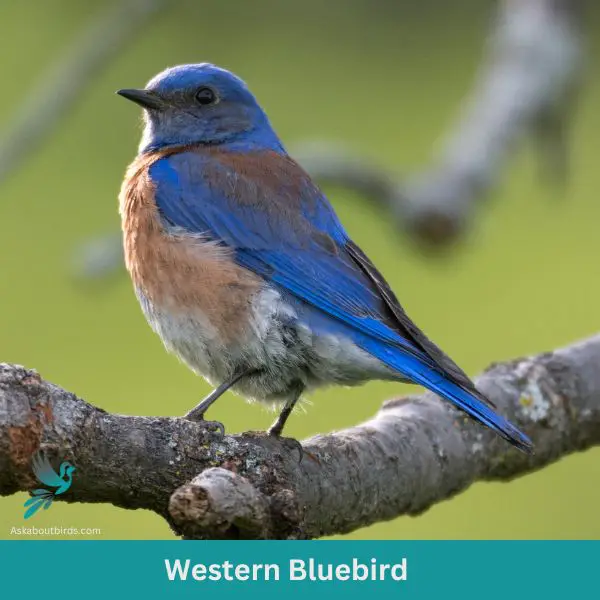
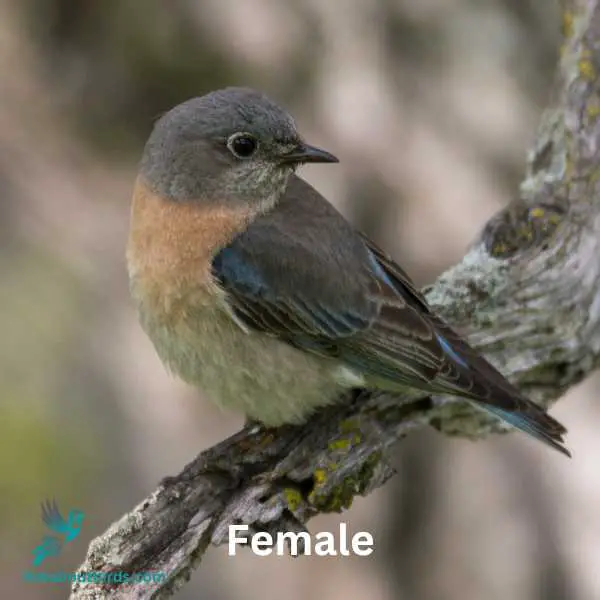
| Trait | Western Bluebird |
|---|---|
| Scientific Name | Sialia mexicana |
| Length | 5.5-7 inches |
| Wingspan | 11-13 inches |
| Weight | 0.8-1.1 ounces |
The Western Bluebird is a charismatic bird, appreciated for its vivid coloring and melodious song, commonly observed in open woodlands and meadows of the West.
Appearance: The male Western Bluebird sports a dark blue head, throat, wings, and tail with an orange breast and sides, transitioning into a grayish belly. Females are more muted, displaying grayish-blue wings and tail with a more subdued orange wash on the chest.
Diet: Western Bluebirds predominantly feed on insects, complemented by berries and fruits when available. They hunt by perching and then diving to the ground to capture their prey, and they’re also known to catch insects in mid-air.
Reproduction: These birds often utilize natural tree cavities or nest boxes for breeding. The female builds a loose nest inside and lays a clutch of 4-6 pale blue eggs.
Woodhouse’s Scrub-Jay
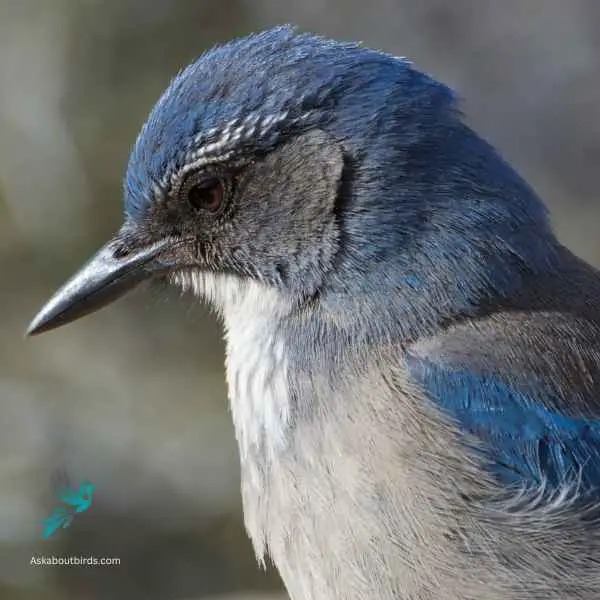

| Feature | Measurement |
|---|---|
| Scientific Name | Aphelocoma woodhouseii |
| Length | 11–12 in |
| Wingspan | 15 in |
| Weight | 80 g |
Woodhouse’s Scrub-Jay is a medium-sized bird that is found in the western part of North America. It has a blue-gray head, wings, and tail, with a brownish-gray back and a white belly. The bird’s bill is black and its eyes are dark. Woodhouse’s Scrub-Jay is known for its loud and harsh calls, which it uses to communicate with other birds in its flock.
This bird is commonly found in arid and semi-arid habitats, such as deserts, scrublands, and oak woodlands. It is an omnivore, feeding on a variety of insects, seeds, fruits, and small animals. Woodhouse’s Scrub-Jay is known for its intelligence and ability to cache food for later use. It is also a territorial bird, defending its territory from other birds and animals. Despite being a common bird, Woodhouse’s Scrub-Jay is threatened by habitat loss and fragmentation, making conservation efforts important for its survival.
Mountain Bluebird
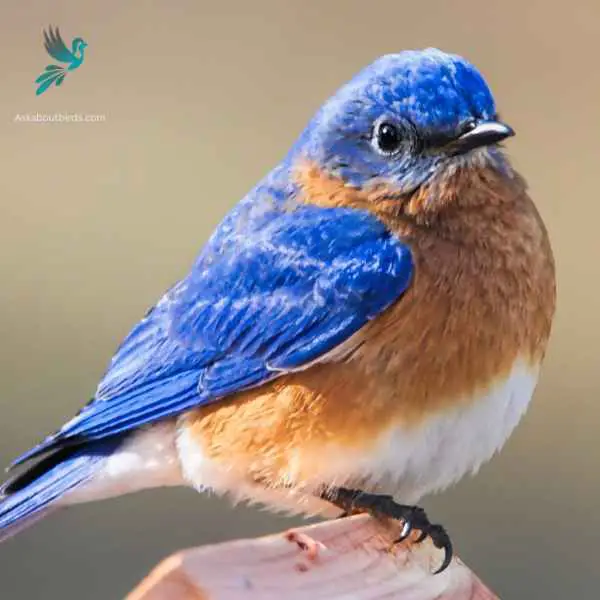
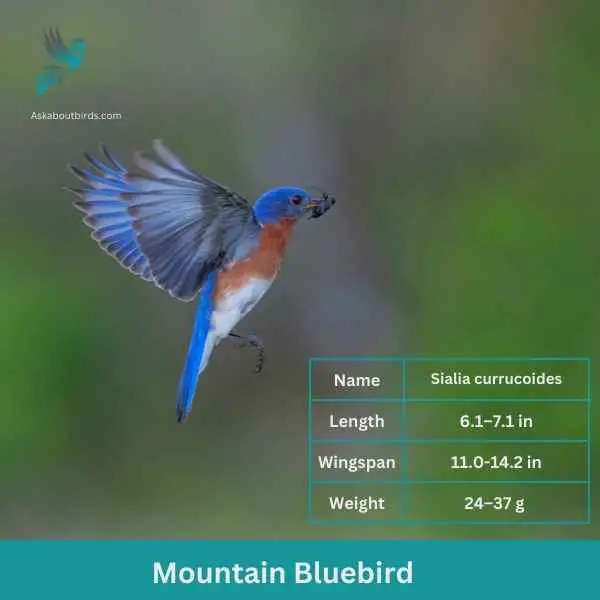
| Feature | Measurement |
|---|---|
| Scientific Name | Sialia currucoides |
| Length | 6.1–7.1 in |
| Wingspan | 11.0-14.2 in |
| Weight | 24–37 g |
The Mountain Bluebird is a small bird found in open grasslands and rocky mountains of North America. It is known for its stunning blue plumage, which is particularly vibrant in males. Females, on the other hand, have a more subdued blue coloration with hints of gray. These birds have slender bodies and a slightly curved bill, adapted for catching insects on the wing.
Mountain Bluebirds are insectivores, feeding primarily on insects such as beetles, grasshoppers, and spiders. They are skilled aerial hunters, capable of capturing their prey in mid-flight. During breeding season, these birds build their nests in tree cavities or man-made nest boxes, where females lay a clutch of eggs. The male bluebird actively participates in nest-building and provides food for the female during incubation.
Cliff Swallow
Scientific Name: Petrochelidon pyrrhonota
Length: 5-6 in (13-15 cm)
Wingspan: 11-12 in (28-30 cm)
Weight: 0.7-1 oz (20-28 g)
The Cliff Swallow is a small, agile bird known for its characteristic mud nests, social behavior, and long-distance migrations.
Appearance: Cliff Swallows have a distinctive appearance with a dark blue back, a cream-colored forehead, an orange-brown rump, and a buffy or whitish underbelly. They also have a square or slightly notched tail.
Diet: The diet of Cliff Swallows primarily consists of flying insects, including flies, beetles, and wasps, which they catch in the air while flying.
Reproduction: Cliff Swallows are known for building gourd-shaped mud nests, often in colonies on vertical cliff faces, bridges, or buildings. The female typically lays a clutch of 3 to 6 white eggs. Both parents participate in incubating the eggs and feeding the chicks.
Indigo Bunting


| Feature | Measurement |
|---|---|
| Scientific Name | Passerina cyanea |
| Length | 4.5–5.1 in |
| Wingspan | 7.1–9.1 in |
| Weight | 11.2–21.4 g |
The Indigo Bunting is a strikingly vibrant songbird, often hailed for its brilliant blue plumage and melodic song that graces woodlands and meadows during the warmer months.
Appearance: Males are renowned for their bright indigo blue feathers, which can appear darker in certain lights. Females and juveniles, on the other hand, are brown with subtle hints of blue on their wings and tail. The species lacks the vibrant streaking or spotting commonly found in many other songbirds.
Diet: Indigo Buntings primarily subsist on seeds, especially during non-breeding seasons. During the breeding season, they also consume a variety of insects such as beetles, caterpillars, and spiders, providing essential protein for their growing chicks.
Reproduction: Indigo Buntings build their nests close to the ground in shrubs or low tree branches. These nests, crafted meticulously with grasses and other plant materials, cradle clutches of typically 3 to 4 eggs. After hatching, the young are fed by both parents until they’re ready to fledge.
Lazuli Bunting
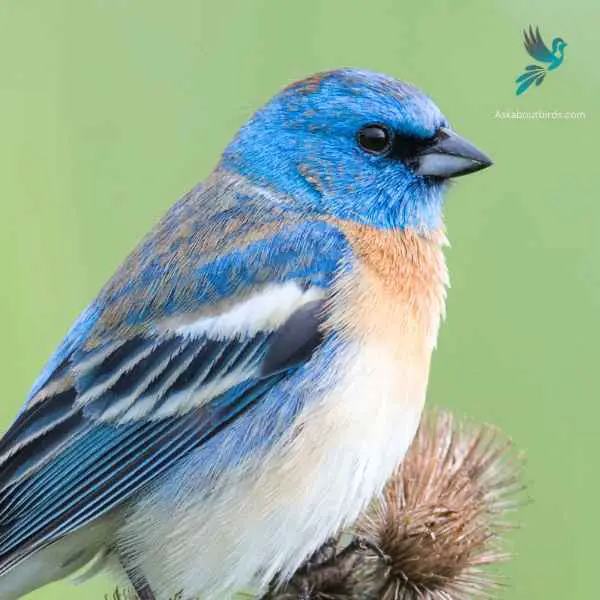

| Feature | Measurement |
|---|---|
| Scientific Name | Passerina amoena |
| Length | 5.1-5.9 in |
| Wingspan | 8.7 in |
| Weight | 13-18 g |
The Lazuli Bunting is a vibrant songbird recognized for its brilliant colors and melodious song, frequently seen in brushy areas and woodlands during the summer months.
Appearance: The male boasts a dazzling bright blue head and back, offset by a white belly and rust-orange breast. Females and immature birds present a more muted brownish hue overall, with a hint of blue on the wings and tail.
Diet: Lazuli Buntings primarily feed on seeds, but during the breeding season, they’ll also consume insects. Their strong, conical beaks are perfectly adapted for seed-cracking.
Reproduction: The female Lazuli Bunting constructs a cup-shaped nest using grasses, twigs, and other fine materials, often placing it in a shrub or low tree. She typically lays a clutch of 3-4 pale blue or white eggs.
Blue Jay

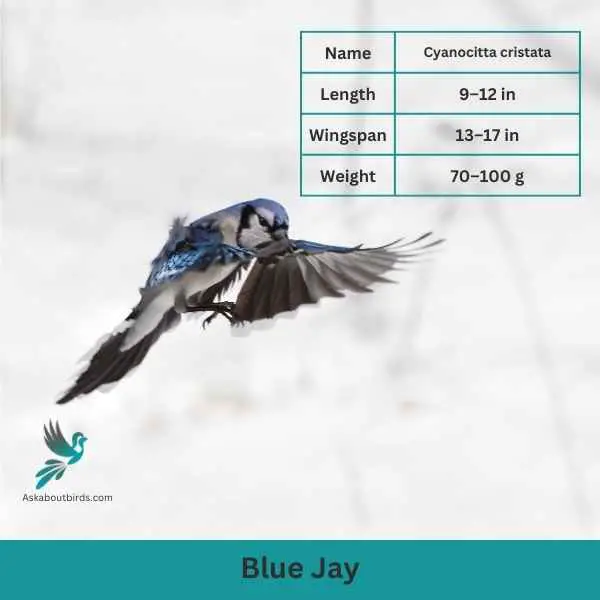
| Feature | Measurement |
|---|---|
| Scientific Name | Cyanocitta cristata |
| Length | 9–12 in |
| Wingspan | 13–17 in |
| Weight | 70–100 g |
The Blue Jay is a vibrant and easily recognized bird, known for its intelligence, distinctive calls, and bold behavior, commonly found throughout the eastern and central United States.
Appearance: The Blue Jay sports a striking blue upper body with white and black markings. Its face has a pronounced white patch with a black necklace that runs across the throat and around the head. The bird also features a pronounced blue crest, which can be raised or lowered, and its wings and tail are brightly colored with black bars and white tips.
Diet: Blue Jays are omnivores. Their diet consists primarily of seeds, nuts, especially acorns, fruits, and small insects. They’ve also been known to eat eggs or nestlings of other birds occasionally. Blue Jays often store food items in caches to eat later.
Reproduction: Blue Jays are monogamous birds that form long-lasting pair bonds. They typically build their nests in trees or large shrubs, constructing them from twigs, grass, and sometimes using mud as a binder. The female lays a clutch of 3 to 6 eggs, which are pale blue or sometimes white with brown speckles.
Steller’s Jay
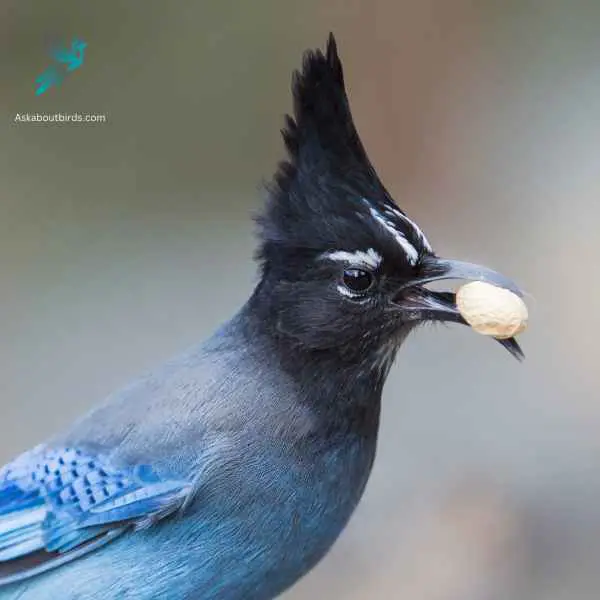

| Feature | Measurement |
|---|---|
| Scientific Name | Cyanocitta stelleri |
| Length | 12–13 in |
| Wingspan | 45 to 48 cm |
| Weight | 45 to 48 cm |
The Steller’s Jay is a charismatic and easily recognizable bird found mainly in the coniferous forests of the western North America, known for its bold behavior and loud, varied calls.
Appearance: The Steller’s Jay has a striking color contrast with a deep blue body and wings and a blackish head and upper body. One of its most distinguishing features is the tall, dark crest on its head, which can be raised or lowered depending on the bird’s mood. Its eyes are dark and its beak is strong and black.
Diet: The Steller’s Jay is omnivorous. It feeds on a wide range of items, from seeds, nuts, and berries to insects and small animals. It’s also known to raid campsites and picnics, often scavenging for human food.
Reproduction: Steller’s Jays form monogamous pairs that often remain together for several years. They typically build their nests in coniferous trees, made from twigs, moss, and other plant materials. The female lays a clutch of 2 to 6 eggs, which are usually pale green or blue with brown spots.
Tree Swallow
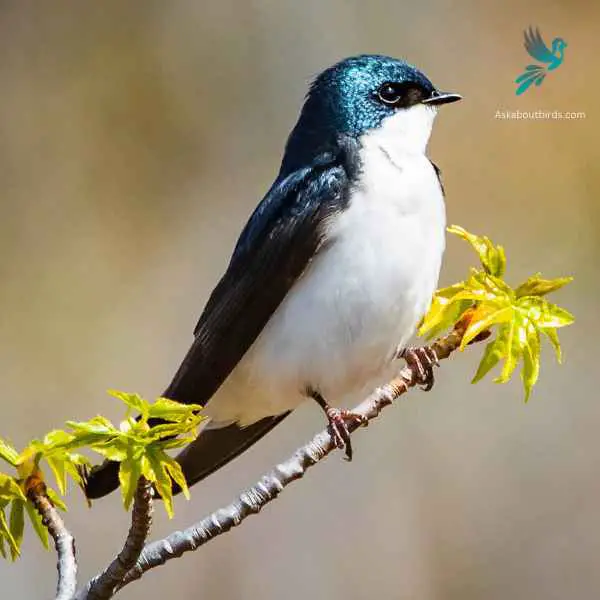
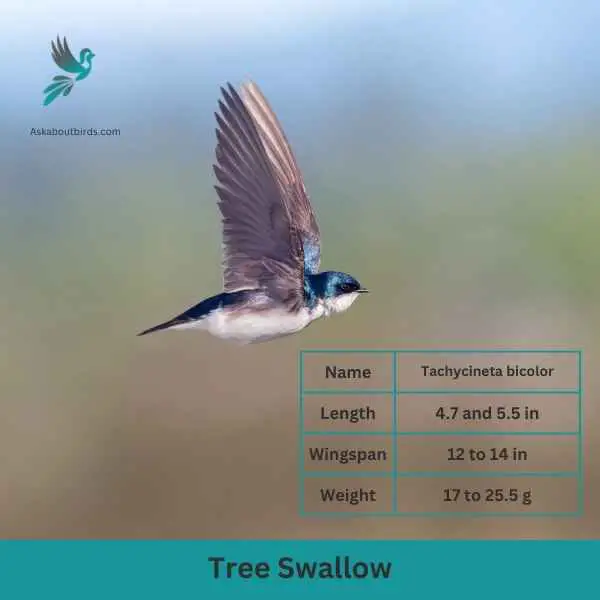
| Feature | Measurement |
|---|---|
| Scientific Name | Tachycineta bicolor |
| Length | 4.7 and 5.5 in |
| Wingspan | 12 to 14 in |
| Weight | 17 to 25.5 g |
The Tree Swallow is a graceful and agile bird, best recognized for its iridescent blue-green upperparts and sweeping flight patterns over open fields and water.
Appearance: The Tree Swallow is sleek with a streamlined body. The upperparts shine with a blue-green iridescence while the underparts are white. They possess long, pointed wings and a slightly forked tail, aiding in their agile flight.
Diet: Tree Swallows primarily feed on flying insects, skillfully catching them mid-air. During colder months when insects are scarce, they can switch to a diet of berries, particularly those of the bayberry, which other birds might find hard to digest.
Reproduction: Tree Swallows are cavity-nesters, typically choosing natural holes in trees or using bird boxes. They line their nests with feathers, creating a soft environment for the eggs. The female will lay a clutch of 4 to 7 white eggs.
Belted Kingfisher

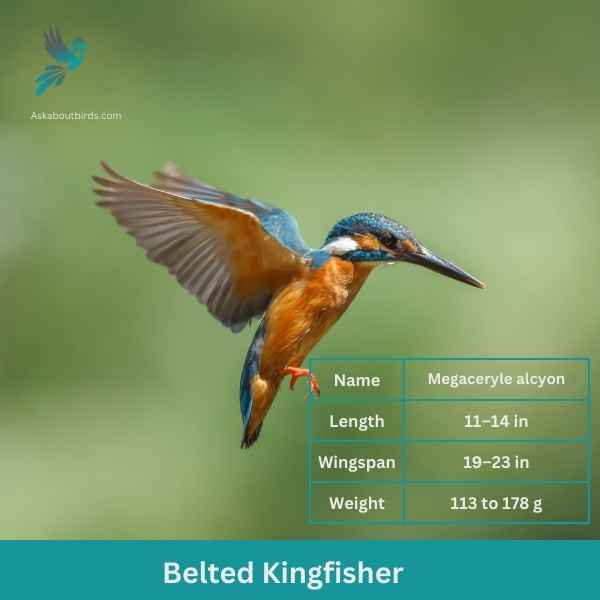
| Feature | Measurement |
|---|---|
| Scientific Name | Megaceryle alcyon |
| Length | 11–14 in |
| Wingspan | 19–23 in |
| Weight | 113 to 178 g |
The Belted Kingfisher is a distinctive and easily recognizable bird, frequently observed near water bodies, where it can be seen diving headfirst to catch prey.
Appearance: Sporting a prominent crest, the Belted Kingfisher has a slate blue-gray upper body and white underparts. Males possess a single blue band across their white chests, while females have an additional rufous band, making them one of the few bird species where females are more brightly colored than males. Their bill is long, sharp, and dagger-like.
Diet: As expert fishers, Belted Kingfishers mainly prey on small fish, but they’ll also consume crustaceans, insects, and amphibians. They’re known for their hunting tactic of hovering over water, spotting their prey, and then diving swiftly to snatch it.
Reproduction: Belted Kingfishers nest in burrows which they excavate in sandy or earthen banks, usually adjacent to water. The tunnel can be anywhere from 3 to 6 feet long, ending in a chamber. Within this chamber, the female lays a clutch of 5 to 8 white eggs.
Blue Grosbeak
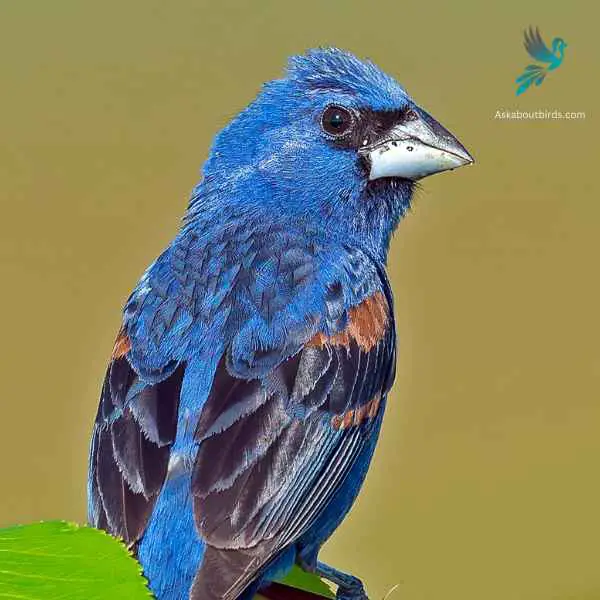

| Feature | Measurement |
|---|---|
| Scientific Name | Passerina caerulea |
| Length | 5.5 to 7.5 in |
| Wingspan | 10 to 11 in |
| Weight | 26 to 31.5 g |
The Blue Grosbeak is a medium-sized songbird found in North and Central America. The male Blue Grosbeak displays stunning plumage with deep blue feathers on its body and head, while the female has more subdued brownish tones. Both sexes have a thick, conical bill, which gives them their name “grosbeak,” meaning large beak.
These birds prefer open habitats such as grasslands, brushy areas, and woodland edges. Blue Grosbeaks are known for their melodious songs, which consist of a series of rich and varied notes. They primarily feed on seeds and insects, using their strong beaks to crack open seeds and forage on the ground or in low vegetation.
Where to Spot Wyoming’s Blue Birds
Wyoming is a haven for birdwatchers, especially those with a keen interest in blue birds. With its diverse geography, the state provides an array of habitats few birds that attract a multitude of bird species. Here are some of the top locations in Wyoming known for their great diversity of birds, making them perfect spots for birdwatching:
- Yellowstone National Park: This iconic park is not only home to incredible geothermal features and stunning landscapes but also a wide variety of bird species. From mountain bluebirds to Steller’s jays, the park is a must-visit location for anyone interested in birdwatching.
- Grand Teton National Park: Located south of Yellowstone, this park is famous for its dramatic mountain range, alpine lakes, and diverse wildlife. It’s an excellent spot for sighting blue birds like the mountain bluebird and the blue grosbeak.
- Medicine Bow National Forest: This large national forest in southeastern Wyoming is home to a variety of habitats, from mountainous terrain to expansive forests, making it an ideal location for spotting different species of blue birds, including the western bluebird.
- Bighorn National Forest: Located in north-central Wyoming, this national forest provides a variety of habitats, from grasslands to alpine meadows, attracting a wide range of bird species, including the blue jay and the indigo bunting.
- Seedskadee National Wildlife Refuge: This refuge is located along the Green River in southwestern Wyoming and is known for its riparian and wetland habitats, which attract a variety of bird species, including the tree swallow and the belted kingfisher.
| Neighboring State’s Blue Birds | Best Spots for Blue Birds |
|---|---|
| Montana’s Blue Birds | 1. Glacier National Park 2. Bitterroot National Forest 3. Charles M. Russell National Wildlife Refuge |
| South Dakota’s Blue Birds | 1. Custer State Park 2. Black Hills National Forest 3. Badlands National Park |
| Nebraska’s Blue Birds | 1. Niobrara National Scenic River 2. Valentine National Wildlife Refuge 3. Smith Falls State Park |
| Colorado’s Blue Birds | 1. Rocky Mountain National Park 2. San Juan National Forest 3. Garden of the Gods |
| Idaho’s Blue Birds | 1. Sawtooth National Forest 2. Coeur d’Alene River Wildlife Management Area 3. Boise National Forest |
| Utah’s Blue Birds | 1. Zion National Park 2. Uinta-Wasatch-Cache National Forest 3. Fishlake National Forest |
FAQs on Blue Bird Species Found in Wyoming
What Are Suitable Nesting Materials for House Sparrows?
House Sparrows like other bluebirds are not very picky about their nesting materials. They typically use a wide variety of materials to build their nests. Common materials include grasses, twigs, leaves, and feathers. However, they have also been known to use human-made materials like paper, plastic, and string. It’s important to keep the nesting area clean and free of harmful materials, as sparrows will use almost anything they find. If you want to help sparrows, you can leave out nesting materials like straw or hay.
How to Attract More Bluebirds to Your Garden?
Bluebirds are attracted to open spaces with scattered trees, as this mimics their natural habitat. They are also attracted to areas with plenty of insects and mealworms, bluebird’s special favorite. To attract more bluebirds, keep your garden or yard open spaces and scattered trees, with a few trees or large shrubs. Install bluebird nest boxes to provide nesting sites. Offer mealworms, sunflower seeds, or whole peanut butter mixes in a bird feeder. Additionally, a birdbath with fresh water can also attract other bluebird species. Regularly clean and maintain the bird feeders and birdbath to keep the blue beauties coming back.
What is the difference between mountain bluebirds and western bluebirds?
Mountain and eastern bluebirds are, known for their hovering flight, and western bluebirds are two different species of bluebirds found in North America. The mountain bluebird species is known for its bright blue color, especially in males, and is typically found in mountainous regions, open woodlands, and scattered trees in the western half of North America. Western bluebirds (Sialia mexicana), on the other hand, have a deep blue plumage with a rust-colored chest and can be found in open woodlands, farmlands, and suburban locations in the western United States and Mexico.
What kind of habitat do western bluebirds prefer?
Western bluebirds prefer open woodlands, farmlands, and suburban locations with scattered trees. They are commonly found in pine trees, along the edges of deciduous forests or conifer tree, and in orchards and vineyards. They also use nest boxes provided by humans, making them a common sight in backyards and golf courses in the western United States and Mexico. Providing nesting boxes and maintaining open spaces with scattered trees can help support western bluebird populations.


